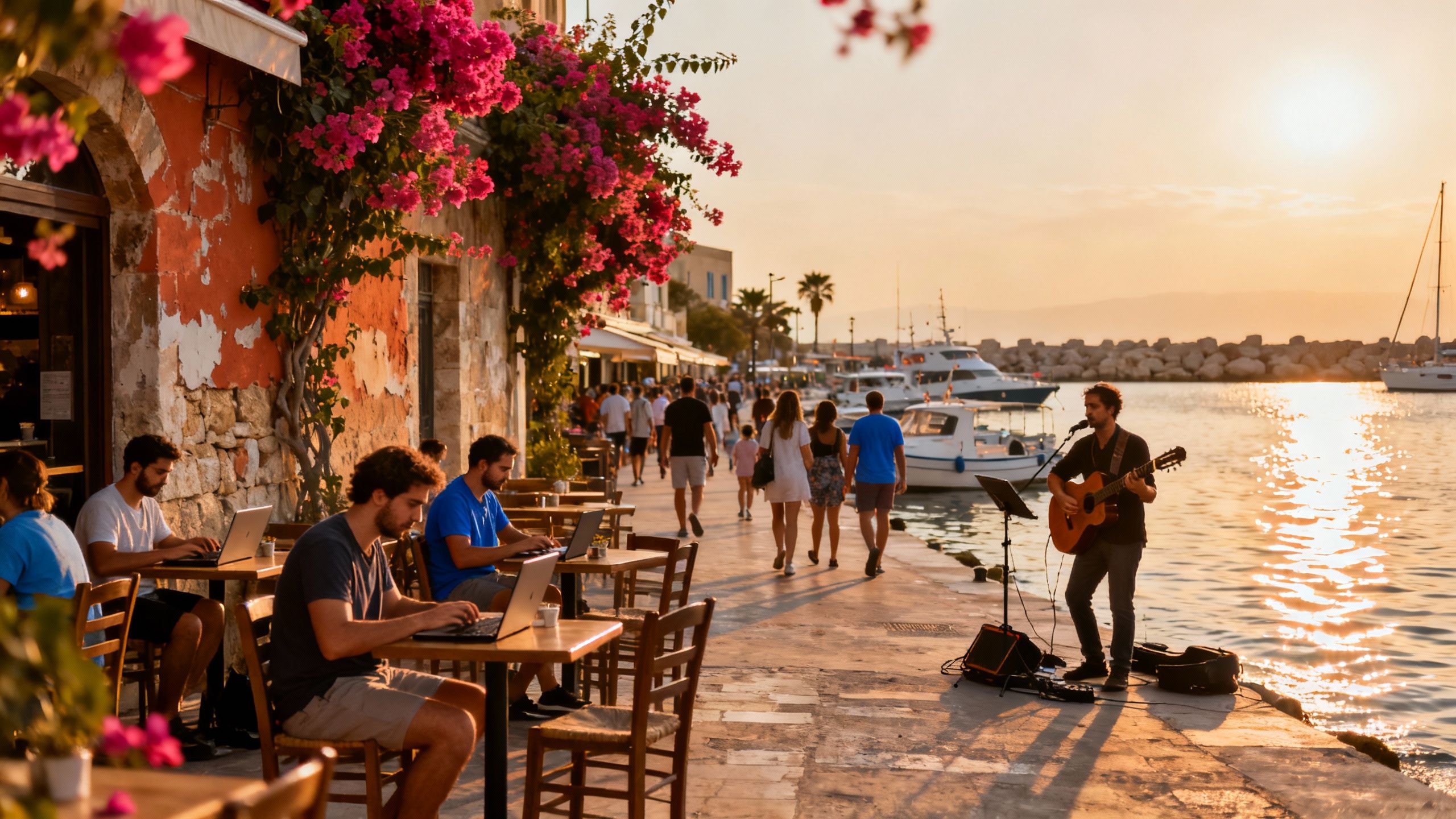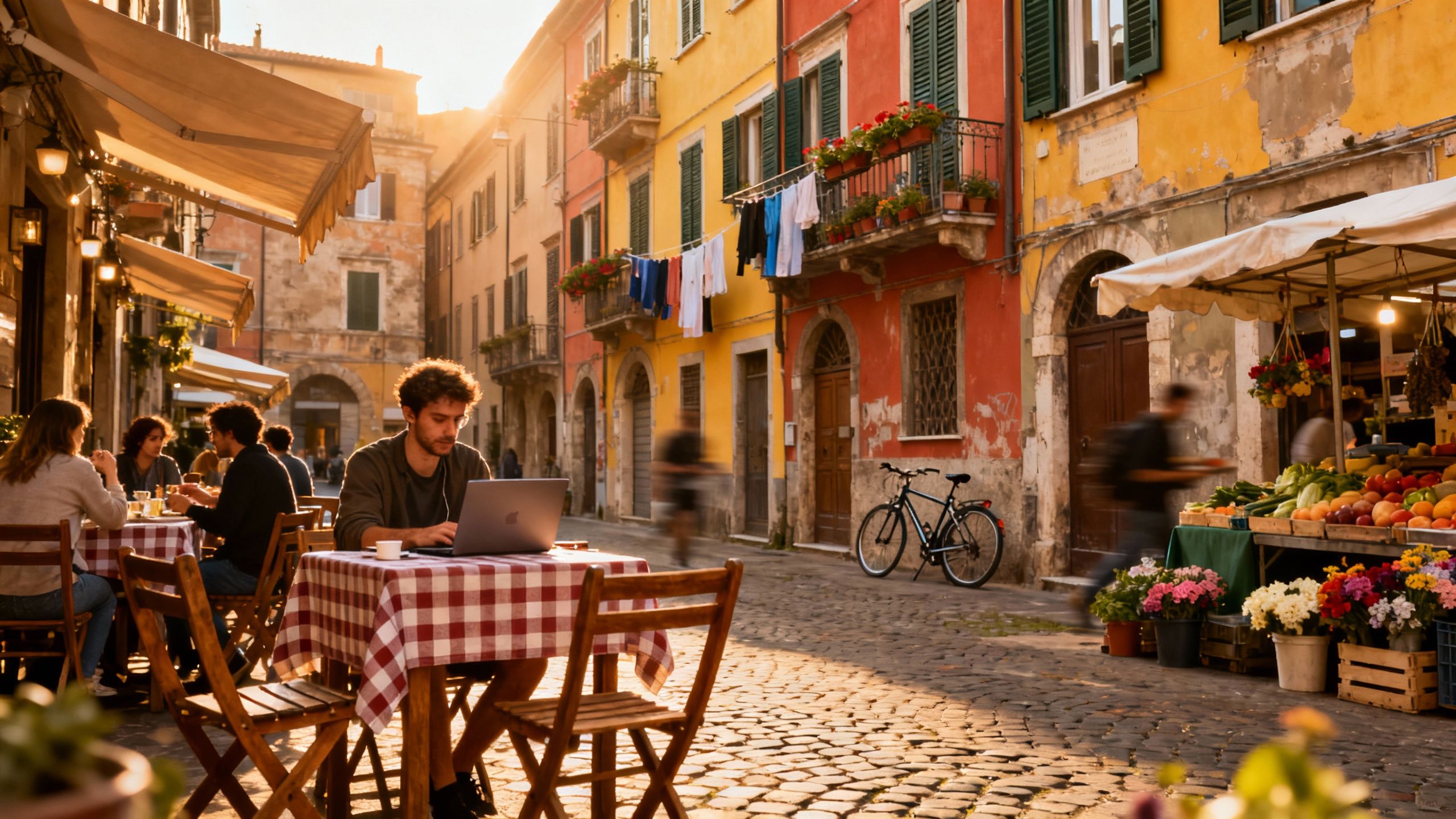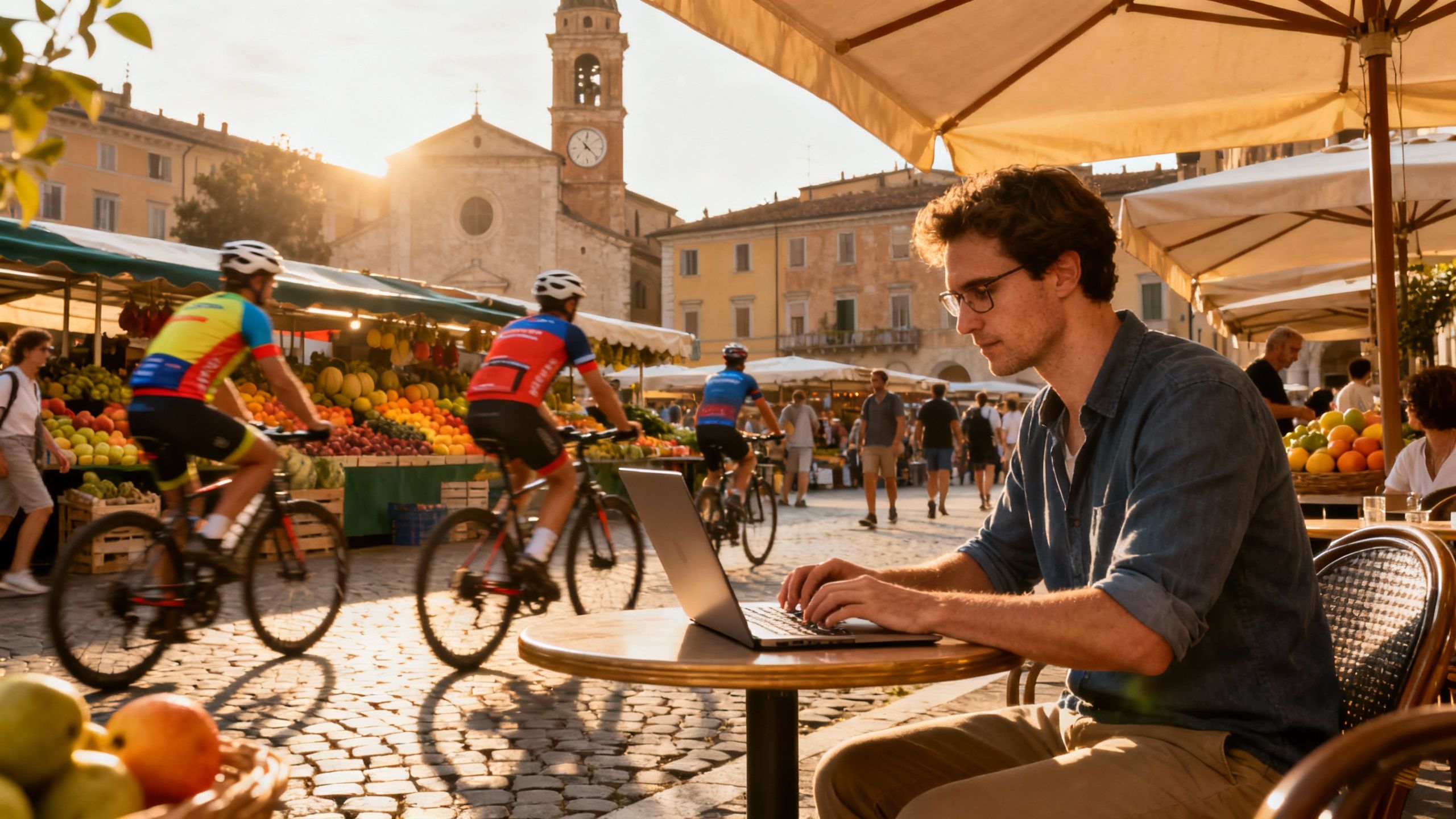Buy Where Locals Buy: Malta's Quiet Value Zones
Malta’s tiny islands blend sun, community and rising prices—use neighbourhood vibes plus official RPPI data to pick lifestyle value, connectivity, and long-term upside.
Imagine starting your day with an espresso on a narrow street in Sliema, laptop open, ferry bells in the distance and a sea breeze that makes even busy days feel like a holiday. Malta moves at two speeds: sun-soaked and social by day, buzzing and intimate by night. For nomads, that rhythm—walkable short runs to cafes, strong English, compact travel times—changes how you choose a home. This piece shows where locals actually buy, why price moves matter, and how to match lifestyle with smart property decisions in Malta.
Living the Malta lifestyle
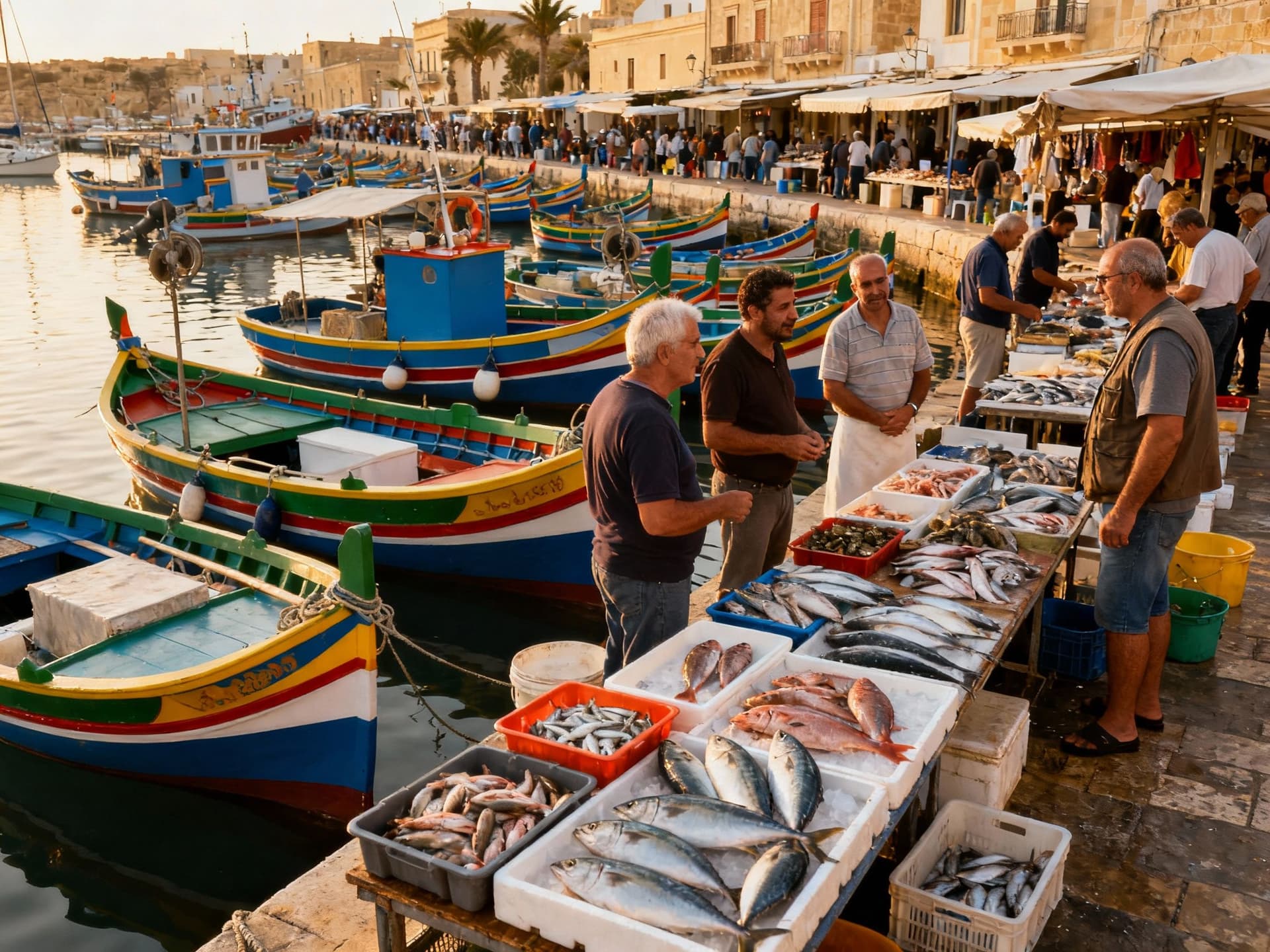
Malta is compact by design: days are shorter door-to-door and community is close-knit. You’ll trade long commutes for a neighbour who knows your coffee order and a Friday aperitivo on a reclaimed terrace. Recent national figures show house prices remain on an upward trend, so lifestyle choices often double as investment decisions. Local markets, festivals and coastline access shape where nomads pick a base—and they push prices differently across towns. (See official RPPI data for context).
Sliema & Gzira: the nomad frontline
Picture morning walks along the promenade, coworking meetups in converted townhouses, and rooftop terraces that double as evening social hubs. Sliema and neighbouring Gzira are where cafes, fast fibre and short-term rental demand concentrate. Expect higher per-square-metre prices but unmatched walkability and reliable work-friendly spots. If your life is cafe-office-beach, these are the towns that feel like home immediately.
Marsaxlokk & South Coast: slow seaside life
Swap the promenade for pastel fishing boats and Sunday fish markets in Marsaxlokk. The south coast delivers space, traditional village rhythms and better value per square metre than the central waterfronts. You’ll need a car more often, but mornings are quieter and terraces bigger—great if you want indoor-outdoor living without paying central premiums.
Mdina & Rabat: historic silence, thick stone walls
If you crave historic lanes and a slower pace, Mdina’s narrow alleys and Rabat’s cafes offer a different Malta. Properties here come with character—thick limestone, original arches and sometimes tiny courtyards—but renovations can be quirky and require specialist trades. You get charm and cooler summers, but factor in restoration time and local planning quirks.
- Lifestyle highlights to try before you buy: a) Coffee at Café de Paris in Valletta; b) Sunset drinks on Sliema promenade; c) Sunday fish market in Marsaxlokk; d) A week working from a Gozo farmhouse; e) Evening passeggiata on Spinola Bay; f) A winter festa in a village square.
Making the move: practical considerations
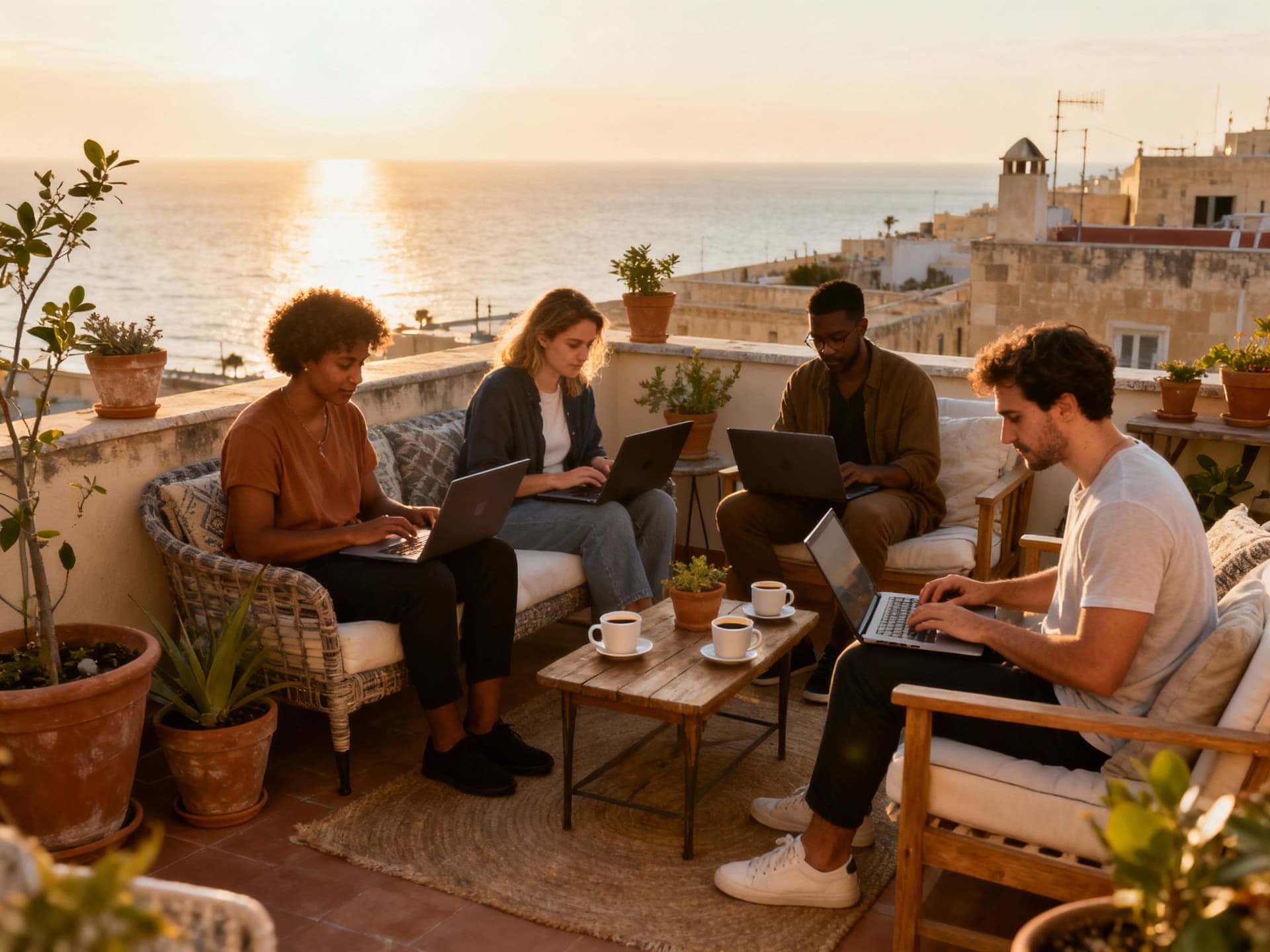
Dreams meet deeds when you start looking at listings. National data shows residential property prices rose in recent quarters, so timing and neighbourhood choice matter more than ever. Instead of chasing skyline sea-views, think about internet reliability, terrace size, and commute to coworking—those affect daily life and resale potential. Use market data to spot momentum, then layer on lifestyle fit.
Property styles & how you’ll actually live
Apartments with balconies dominate coastal towns; maisonettes and terraced houses appear inland. If you’re a digital nomad, prioritise: strong fibre or 4G coverage, a quiet corner for video calls, and outdoor space for breaks. Older limestone homes have soul but may need insulation or plumbing upgrades. Newer builds give modern comforts but less character—decide which trade-off sparks joy.
Work-permit realities affect where nomads settle. Malta’s Nomad Residence Permit now requires higher minimum income thresholds and offers renewals—details that shape short-term vs long-term stays. If you plan to stay multiple years, factor permit rules, tax treatment and required local paperwork into your timeline; these influence whether you pick Sliema’s flexibility or a quieter long-term anchor like Rabat.
- Step-by-step move checklist: 1) Test your routine: spend 2–4 weeks living in candidate neighbourhoods during different seasons. 2) Check connectivity: confirm advertised fibre or 4G speeds with local providers. 3) Budget for upgrades: set aside 10–20% for retrofit costs in older stone homes. 4) Speak to two local agents and one independent lawyer before making an offer. 5) Plan for seasonality: festival months change short-term rental demand and noise levels.
Insider knowledge: what expats wish they’d known
Real expat intel: the best buy is rarely the most Instagrammable. Locals pick corners with good sunlight, quieter nights, and easy grocery runs. Festival season is joyous but noisy; many buyers regret buying next to a festa square without ear protection plans. And that ‘spacious’ maisonette might hide bulky renovation permits—ask locals who’ve done the work.
Language, community and social life
English is an official language, so daily life is easy for many nomads. Still, social integration happens through cafés, clubs and volunteer groups. Join a local festa committee or a coworking community to meet Maltese friends fast—the islands reward participation. For families, international school options cluster near central towns, so neighbourhood choice affects school runs and weekend plans.
Long-term lifestyle and investment outlook
If you’re thinking five years and beyond, Malta’s steady price growth suggests capital preservation in central nodes and value upside in improving south-coast pockets. Use official indices to understand momentum, but pair data with on-the-ground checks: rental demand, infrastructure plans, and local planning permission timelines all change value quietly over time.
- Quick red flags to watch: a) Properties without up-to-date title searches; b) Sellers who pressure for cash deals; c) Unconfirmed fibre availability; d) Permanent noise sources (festa, bars) near bedrooms; e) Long-standing planning disputes recorded with local councils.
If Malta feels like a possible next chapter, start small: rent in two different towns across two seasons, meet local agents, and get a feel for community rhythms. The island rewards the curious—show up as a neighbour and you’ll be invited into the life. When you’re ready to search, pick an agent who knows both lifestyle fit and title diligence; they’re the ones who turn a pretty listing into a joyful daily life.
Sources: Malta National Statistics Office RPPI releases and market commentary from local legal and advisory firms informed key claims above. See NSO RPPI Q2/2025, NSO Q4/2024, and Malta nomad permit guidance for eligibility and renewal updates.
Ready to be there? Pick a neighbourhood, spend a month, and let a local agency arrange viewings that match how you actually want to live—not just how a property photographs. Malta’s mix of sea, stone and social life rewards hands-on exploration. See you on the promenade.
Norwegian who has helped 200+ families relocate from Oslo to Spain; expert in relocation services and community integration.
